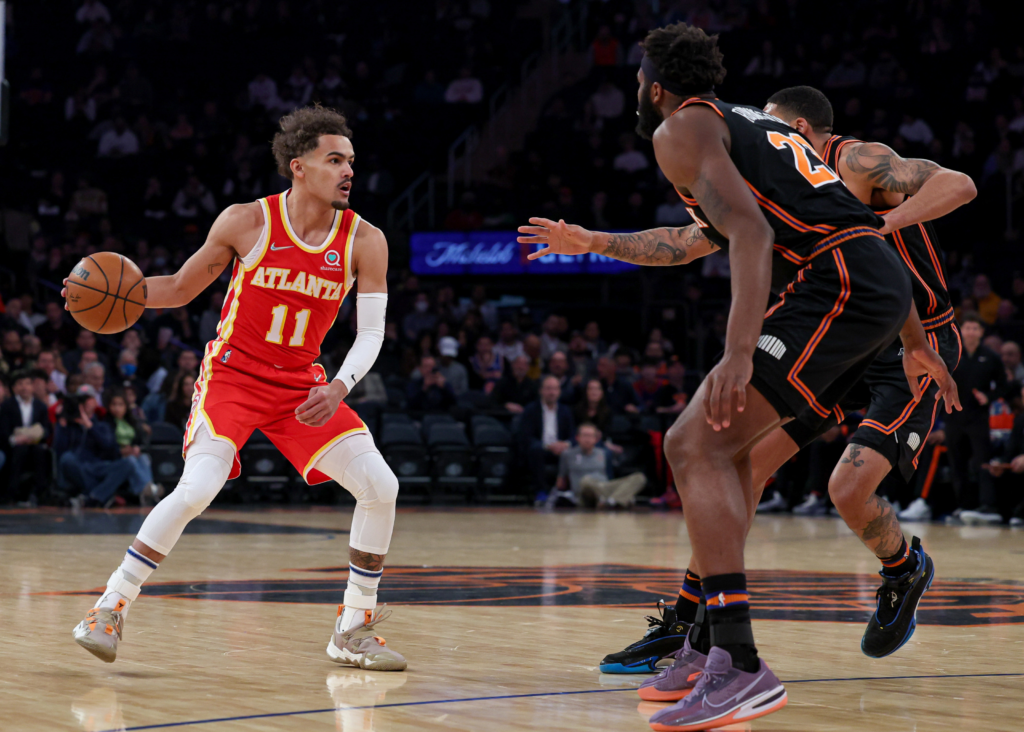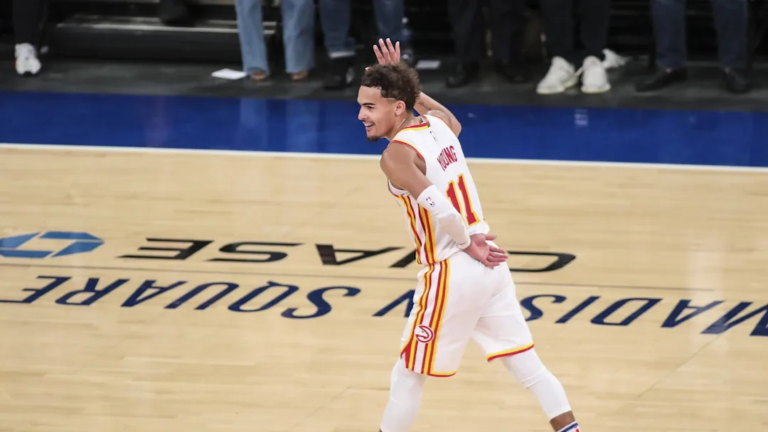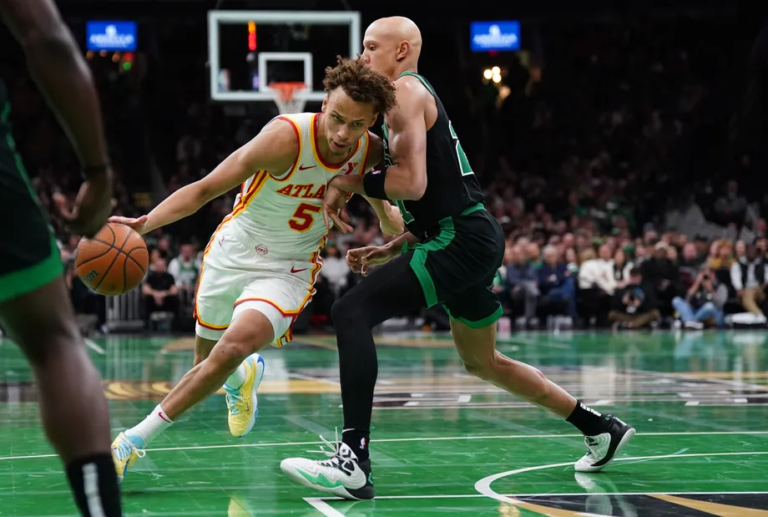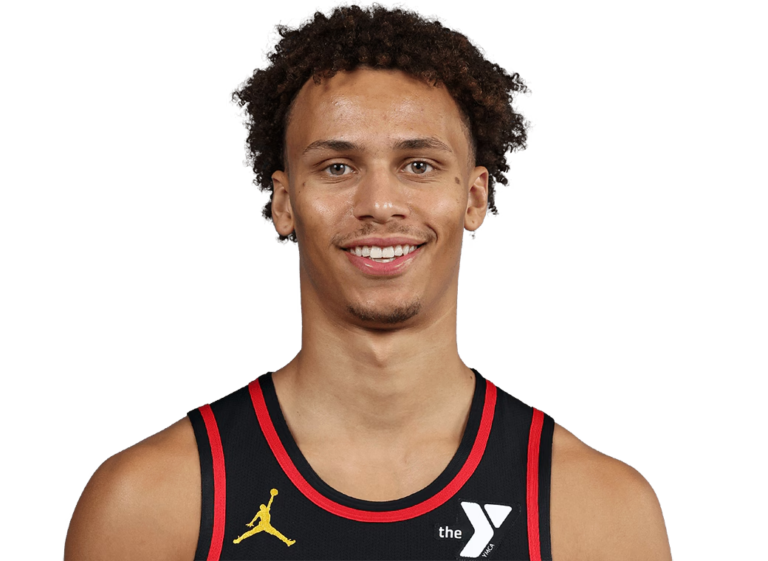
The Atlanta Hawks, and Trae Young in particular, have garnered a lot of national attention over the past weeks and for a lot of the wrong reasons.
First reported by HawksFanTV via Twitter, and detailed later by The Athletic, the 23-year-old All-NBA point guard’s absence from the Denver Nuggets game December 12th raised more than a few eyebrows across the league, and most notably within the Hawks organization.
On December 6th, all parties, from Landry Fields and Nate McMillan to Trae Young, have said that the issue had been dealt with “head-on”, and that the team was ready to get back to focusing on basketball. However, it is tough to completely block out the noise when accredited national media members, such as The Athletic’s, Sam Amick, have alluded to the divide in the locker room and front-office members questioning Young’s leadership ability.
The best way to quiet the noise? Win basketball games.
With two All-Star’s in the fold, a couple of blue-chip draftees, and a more defensive-minded roster than in past seasons, the foundation is there for this team to emerge as a serious threat in this year’s crowded Eastern Conference. Yet, at 14-14 on the season, the team’s performance so far has posed more questions than answers.
Hawks in the Half-Court
One area that is holding this team back is their offense, specifically, their offense in the half-court. After ranking second and first* in offensive rating and half-court points-per-possession (ppp) for the 2021-2022 season respectively, they have fallen to 20th in both categories through the first 28 games of 2022-2023, per cleaningtheglass.com. This is surely a far cry from what Landry Fields and Travis Schlenk envisioned when they pieced this team together.
*They really could have had the number one offense last year, if Clint Capela was not so inconsistent on put-back attempts – despite never averaging fewer than 0.97 ppp on put-back attempts in any season prior, Capela scored a putrid 0.83 ppp on these shots in ‘21-22.
One of the biggest questions facing Atlanta, following their acquisition of Dejounte Murray and the jettison of Kevin Huerter, was how their new dynamic duo would mesh in the half-court. Murray’s skill-set as a slasher/creator is vastly different from Huerter’s** shooter-role, the man he replaced in the Hawks starting lineup.
**Huerter, or “K’Von” as Hawks fans knew him by, is shooting a blistering 43% on seven 3-point attempts a night this season.
Trae Young’s brilliance in the half-court played a significant part in the Hawks’ offensive success in ‘21-22. In the playoffs however, their offensive rating fell to 104.1 against a tough Miami defense which exposed key flaws in their style of play: an over-reliance on Young in the half-court, troubles when facing a switch-everything defensive scheme, and a directionless offense when Young was on the bench.
In addition to improving the point-of-attack defense, the Murray-trade appeared to pave the way for Atlanta to address these issues. Murry averaged 9.2 assists per game last season, and made his first All-Star game last year as the primary ball-handler for the San Antonio Spurs. In theory, he would help take some of the offensive burden off of Young in the half-court, as well as successfully run the bench-unit when Young takes a breather.
The Murray addition also opened up a path for Young to embrace more of a “Steph Curry” role on offense – scrambling defenses with off-ball movement while the initiator [Draymond Green for Golden State, Murray for Atlanta] orchestrates the rest of the offense, finding the best look for the team. This is an effective strategy against defenses like Miami’s, however, it is a strategy that does require a certain level of buy-in from Trae Young. Something which, unfortunately, has not been seen nearly enough so far.

Through 28 games, the offense in the half-court feels more Trae-reliant than ever, as evidenced by his sky-high usage rate, and staggering offensive on/off numbers, which are actually higher than they were last year. The offensive rating plummets to 103 when he is off the floor and when he is on the floor, with less shooting available to stretch the defense than last year, they are less equipped to do what Young is best at, which is run spread pick-and-roll with his lob-partner, Clint Capela. For reference, Atlanta was second overall in spot-up ppp in ‘21-22 versus the 30th ranking they have so far in ‘22-23
On the surface level, it is easy to point to Young’s shooting numbers, which are the lowest they have been since his rookie season, as the main culprit of the Hawks’ offensive struggles. While it is definitely true that he must improve his shooting splits, the bigger concern is that the Hawks success on offense still seems so Trae-reliant when steps were explicitly taken during the off-season to address that very issue.
Some aspects of the offense to drill down are: shot profile, ball movement (or lack thereof), and the types of plays run on offense.
Shot Profile
At some point, where you shoot from does matter, but Atlanta’s shot profile has not been pretty this season. They have the lowest locational effective field goal percentage (eFG%) in the league – meaning if a team were to shoot a league-average FG% from the areas that the Hawks shoot the ball from, that shows what their effective field goal percentage would be.
Currently, Atlanta ranks near the bottom of the league in three-point attempts and makes, whereas last season, they were about league average in attempts and third in three-point accuracy. The brunt of that was carried on the shoulders of Huerter, Danilo Gallinari and Young, who were third and fourth on the team in 3-point attempts, and first and third, respectively, in three-point FG%.
In the chart below (from BBall Index), you can see the difference in catch-and-shoot proficiency between Huerter/Gallinari duo and the two players they have effectively replaced them with. You can also see the degree of difficulty of three’s that Gallinari was taking and making last year, underscoring just how valuable his shooting was for the Hawks in ‘21-22.
{Perimeter Shooting BBall Index Tweet}
Another thing to note is that while Atlanta has reduced the number of three’s they are taking this
season, they have not necessarily replaced these looks with high-percentage shot attempts, as they also lead the league in mid-range field goal attempts (driving Sprawlball readers mad in the process).
While they have the personnel on board to get by on this shot diet, their FG% is right around league average. Their margin for error is small as they are simply taking less “valuable” shots than their opponents. It would be nice to see the perimeter players attack the basket a little bit more going forward.

Bogdan Bogdanovic’s return, as well as AJ Griffin’s burgeoning confidence, should help the shot profile, as should Trae Young and John Collins hopefully finding their touch, but this team’s lack of ball-movement is seriously hurting them in this area – especially given the difference in personnel on the floor.
Speaking of ball movement…
Ball-Movement/Play Types
successful teams either move the ball or have great isolation scorers. By definition if you are not moving the ball you are left with an isolation or p&r ball handler attempt
As mentioned earlier, the Hawks rank amongst the bottom of the league in passing.
To put some numbers behind that, as of December 13th, per the NBA’s tracking data, Atlanta ranked dead last in passes per game, third to last in the percentage of makes that come from assists, and last in the league by a healthy margin in possessions that include 4+passes.
(There was a great article written earlier in the season by Ian Levy detailing the effects this lack
of ball-movement causes in Fansided’s The Whiteboard that you can find here)
This team was not exactly “hot potato’ing” the ball in the seasons prior to this one: 29th in passing in ‘21-22, 25th in ‘20-21. However they also had the shooting on the roster required to turn their shot attempts into points when given the opportunity. This also gave them more space to be effective in isolation and pick & roll attempts.
Atlanta was the second most efficient team on spot-up attempts last year at 1.09 ppp, and they are now the least efficient team on these attempts at 0.86 ppp***. This could be a factor in the guards’ reluctance to create these looks, but steering away from them altogether is far from the solution as the team’s offense right now is being suffocated by their lack of shooting.
*** (the gap between them and 29th is the same as the gap between 29th and 27th)
Young’s efficiency on isolation possessions is down compared to last season (0.98 in ‘21-22 vs. 0.95 so far in ‘22-23), as is his efficiency in field goal attempts out of the pick-and-roll (0.97 in ‘21-22 vs. 0.89 so
far in ‘22-23), and his assist to usage-rate ratio is lower than ever. These are all symptoms of ball-movement woes.
His shooting percentages will bounce back, he is too good for them not to, but there has not been many visible adjustments to his style of play that the Murray-acquisition made possible (his catch-and-shoot [C&S] three’s are only up to 1.6 attempts per game, after he shot 1 per game last season, and in general, he is getting his shots in many of the same ways).
In the chart below, you can see the distribution of the Hawks’ spot-up attempts thus far in ‘22-23 as well as their C&S 3PT% last season compared to this season.
Spot-up attempt + C&S 3p% chart
Trae shot 48% on C&S three’s last season, albeit on a very low volume of attempts, yet he is taking fewer of them per game this season than Murray, John Collins, De’Andre Hunter, and Jarrett Culver (should note Culver has only appeared in six games).
Trae is the one creating a lot of these looks, and it is not possible for him to create and take these shots simultaneously. However, it is possible for him to run a pick-and-roll, draw a double, kick it out to a perimeter player then relocate to the weak-side, while opposing defenses scramble, and wait for the team to work it around the horn until he, or a teammate, gets a good look. Too often, Young stops or relocates near the logo after making the first pass, something that must change, as this team dearly needs his playmaking and gravity in the half-court.This lack of progression in Young’s game is partly the reason the offense absolutely falls apart without him on the floor (103 offensive rating without Trae – fourth percentile).
A statistic that shows how dependent the Hawks are on the pick-and-roll, is Onyeka Okongwu’s offensive on/off rating, which is -9.7, worst on the team and eighth percentile league-wide. Okongwu is a very different player from Clint Capela , since he is a bit more skilled offensively, and the team’s failure to succeed with the former sixth overall pick on the floor is worrisome.
Okongwu is built in a Robert Williams (C-Boston Celtics) or Bam Adebayo (C/PF-Miami Heat) mold. A big with the ball-skills to play five-out on offense and the agility to switch onto most match-up’s on defense. The Hawks should be putting the ball in his hands, running dribble-hand-off’s with movement around him. Okongwu is an underrated playmaker.

If their back-up center’s role is exclusively to protect the rim and be a pick-and-roll partner for their guards, it is not that Okongwu can not be the right man for the job, it is his underutilization. It is like getting an instant-pot and exclusively using it to make rice. Did you know you could make pulled-pork in there too or a stew? Young and Okongwu struggle when they share the court together, and it may be difficult to remedy.
What is clear however, is that Atlanta’s monotonous style of play and lack of ball-movement has led to skilled players like Okongwu finding it difficult to carve out a role for themselves in the offense. One player who can certainly empathize with Okongwu’s situation is Collins. ‘JC’ is currently sidelined due to an ankle injury.
Collins’ received a 5-year/$125 million contract extension before last season and his usage rate is down to 14.3% which is lower than his rookie year, and is also in the midst of the worst offensive season of his career. For this team to be incapable of utilizing him in a better manner speaks volumes about the lack of chemistry, and raises questions about the Hawks’ decision to extend Collins as he has seen his role diminish incrementally ever since the team traded for Capela.
De’Andre Hunter was the recipient of a 4-year/$95 million contract extension this past offseason and his usage rate is about the same as last year. While he looks better offensively, it is hard to say for sure as he, like Okongwu and Collins, has not had a significant role in the offense early on (though 1.16 ppp on 36 isolation possessions is encouraging). Hunter’s perimeter defense has been vital to the Hawks’ success on that end of the floor, but it woudl be nice to see him be more of a presence on the glass, as it could give way to the Hawks using him at the four in certain lineups.

It also appears that the team is still figuring out the best ways to use the rest of their recent first-round draft picks: Jalen Johnson and A.J. Griffin.
If they crash and burn in the regular season, so be it they are young, but the Hawks have to at least find out what these players are capable of before it is too late. In the past few games alone, with the team being hit with the injury-bug, we have seen Jalen Johnson make some stunning passes off the dribble and impress in transition situations. Okongwu has shown a bit more confidence in his shooting stroke, and Griffin just continues to impress with his decision-making and effort.
Again, these are not proven veteran players who have made a living off of playing smart basketball alongside superstar players. These are 19-21 year-olds, former blue-chip prospects who are still finding their sea legs early on in their young careers. Even John Collins and Deandre Hunter, at 25-years of age, are not finished products, and for the Hawks to have success in the postseason, they will need a few of these players to pop, and emerge as threats in the half-court.
As seen in last year’s playoffs, Young cannot carry this team to victory every time out so the supporting cast will need to be more involved and more effective this time around. It starts with empowering them during the regular season, figuring out what does and does not work so that when the time comes, they can be deployed effectively when needed.
Obviously coaching has a lot to do with it, but Atlanta’s lead-guards need to do a better job of finding a balance between getting their own looks and empowering their teammates. There is enough talent on this roster, but it is just going to take some time and a little more trust from everyone involved.
General Manager Landry Fields’ was on the popular Atlanta sports talk station, 92.9’s The Game earlier this week and was asked about areas that the Hawks could improve in.

“We have got to continue to move the ball. There is a rhythm that happens, there is a feel, and a chemistry when that ball touches other players” said Fields. “It just kind of keeps them engaged and locked in and that is all part of it.”
There was a separate interview, also on 92.9’s The Game, where Fields was critical of the team’s zero or one-pass possessions, bluntly calling it, “bad basketball”.
Expect to see some improvement from Atlanta here as Fields has reminded us that the front office has a job to do as well, and if they do not feel the pieces they have will get them to their ultimate goal of winning a championship, it is on them to find the correct one’s.
How do you think the Hawks can improve their efficiency in the half-court setting? Let us know with your comments below!







Well said.
All I can reiterate is two words, “Ball Movement.”